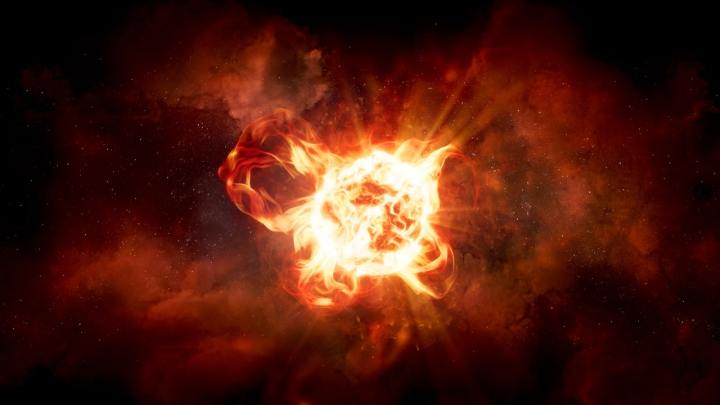
Something strange is up with one of the brightest stars in the sky, Betelgeuse. In the past 18 months, the star has dimmed dramatically from its usual brightness levels, leading to competing theories that it may be covered in sunspots or about to go supernova. But the most commonly accepted theory is that it is giving off matter which forms a cloud of dust, blocking its light.
Now, scientists have turned to another massive red star to learn more about this process. The star, called VY Canis Majoris, is so large it is referred to as a “red hypergiant,” and it is undergoing dramatic, violent changes as it approaches the end of its life. It is as bright as 300,000 suns and if it were placed at the center of our solar system it would engulf all of the planets as far as Saturn.
VY Canis Majoris is so big and impressive it makes an ideal target for research into the extreme lives of stars. “This star is absolutely amazing,” the study’s leader, astrophysicist Roberta Humphreys of the University of Minnesota, said in a statement. “It’s one of the largest stars that we know of — a very evolved, red supergiant. It has had multiple, giant eruptions.”
By studying VY Canis Major, researchers think they can understand what’s happening to Betelgeuse, which may be undergoing similar changes. “VY Canis Majoris is behaving a lot like Betelgeuse on steroids,” explained Humphreys.
Both Betelgeuse and VY Canis Majoris are dimming — but VY Canis Majoris’s dimming events last for periods of years. Researchers think that the same processes are responsible for both, but the processes are happening more dramatically on VY Canis Majoris. Like Betelgeuse, the star is giving off matter which has created a dust cloud. For Betelgeuse, that dust cloud obscures the star’s light from our view and makes it appear to be dimmer.
“In VY Canis Majoris we see something similar, but on a much larger scale,” Humphreys said. “Massive ejections of material which correspond to its very deep fading, which is probably due to dust that temporarily blocks light from the star.”
These ejections are giant arcs of plasma that are sent flying out into space from the star, similar to events on our sun called solar prominences but much larger. They form features like knots away from the star’s surface, and Humphreys’ team dated these features to the last several hundred years. Recently, using the Hubble Space Telescope, they found that they are less than a century old, which is the blink of an eye in the life of a star. The time course of these events is linked to periods when the star was observed dimming over the past hundred years.
The knots are enormous, some of them being more than twice the mass of Jupiter. The star throws off 100 times as much mass as Betelgeuse.
“It’s amazing the star can do it,” Humphreys said. “The origin of these high mass-loss episodes in both VY Canis Majoris and Betelgeuse is probably caused by large-scale surface activity, large convective cells like on the sun. But on VY Canis Majoris, the cells may be as large as the whole sun or larger.
“This is probably more common in red supergiants than scientists thought and VY Canis Majoris is an extreme example. It may even be the main mechanism that’s driving the mass loss, which has always been a bit of a mystery for red supergiants.”



